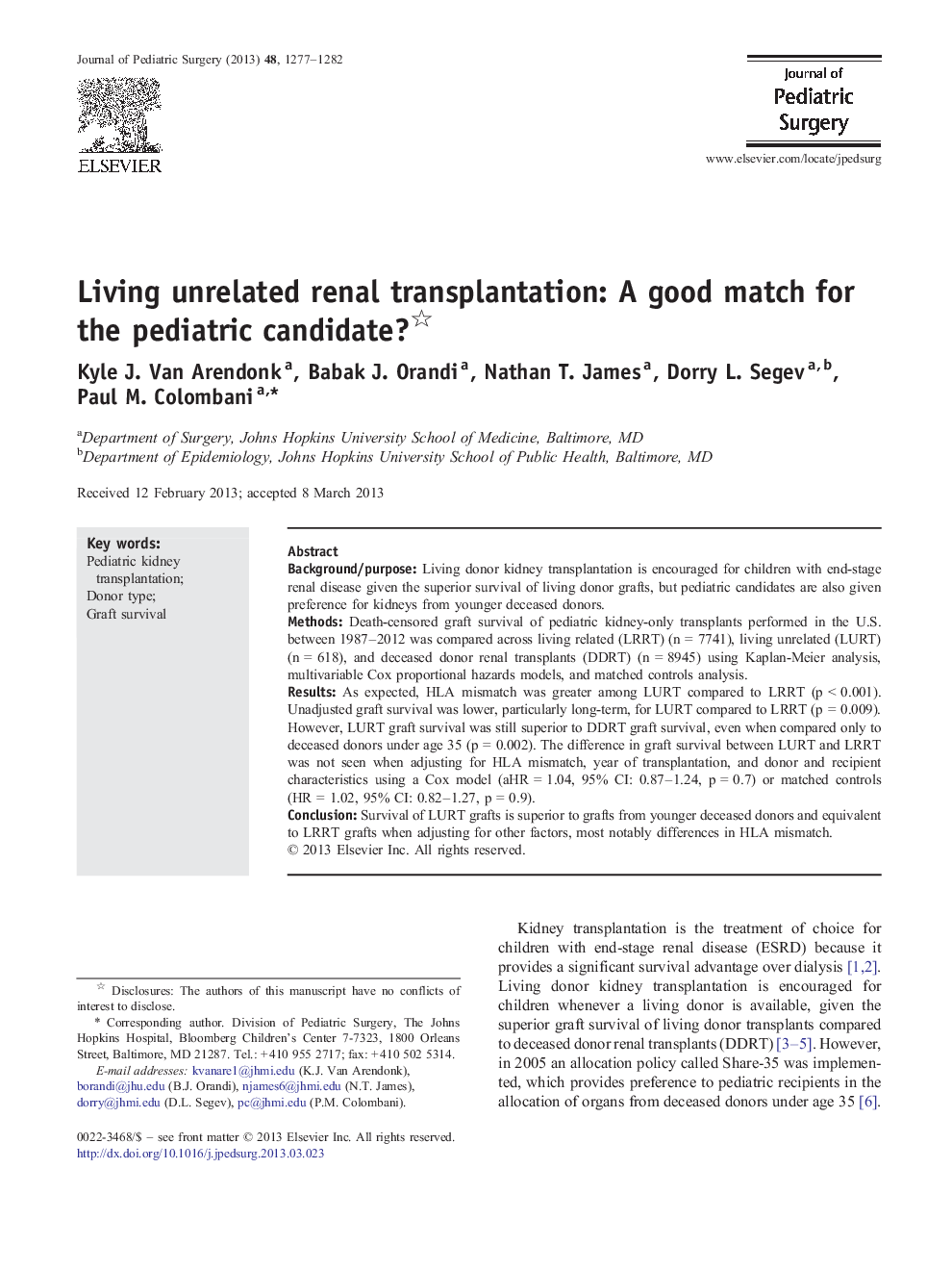| Article ID | Journal | Published Year | Pages | File Type |
|---|---|---|---|---|
| 4156002 | Journal of Pediatric Surgery | 2013 | 6 Pages |
Background/purposeLiving donor kidney transplantation is encouraged for children with end-stage renal disease given the superior survival of living donor grafts, but pediatric candidates are also given preference for kidneys from younger deceased donors.MethodsDeath-censored graft survival of pediatric kidney-only transplants performed in the U.S. between 1987–2012 was compared across living related (LRRT) (n = 7741), living unrelated (LURT) (n = 618), and deceased donor renal transplants (DDRT) (n = 8945) using Kaplan-Meier analysis, multivariable Cox proportional hazards models, and matched controls analysis.ResultsAs expected, HLA mismatch was greater among LURT compared to LRRT (p < 0.001). Unadjusted graft survival was lower, particularly long-term, for LURT compared to LRRT (p = 0.009). However, LURT graft survival was still superior to DDRT graft survival, even when compared only to deceased donors under age 35 (p = 0.002). The difference in graft survival between LURT and LRRT was not seen when adjusting for HLA mismatch, year of transplantation, and donor and recipient characteristics using a Cox model (aHR = 1.04, 95% CI: 0.87–1.24, p = 0.7) or matched controls (HR = 1.02, 95% CI: 0.82–1.27, p = 0.9).ConclusionSurvival of LURT grafts is superior to grafts from younger deceased donors and equivalent to LRRT grafts when adjusting for other factors, most notably differences in HLA mismatch.
